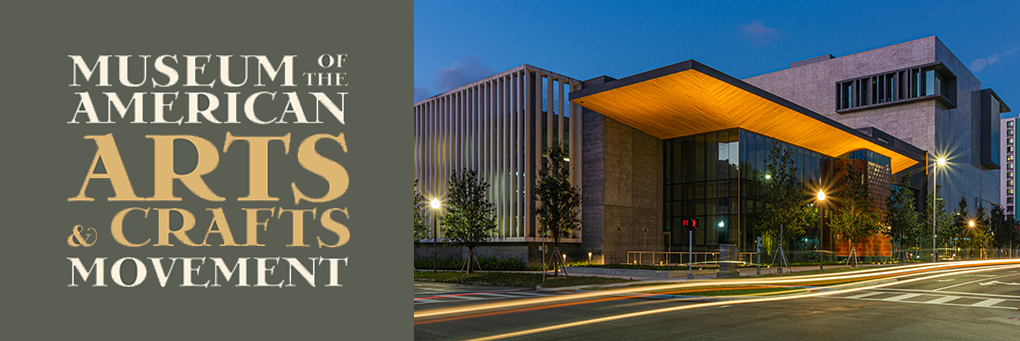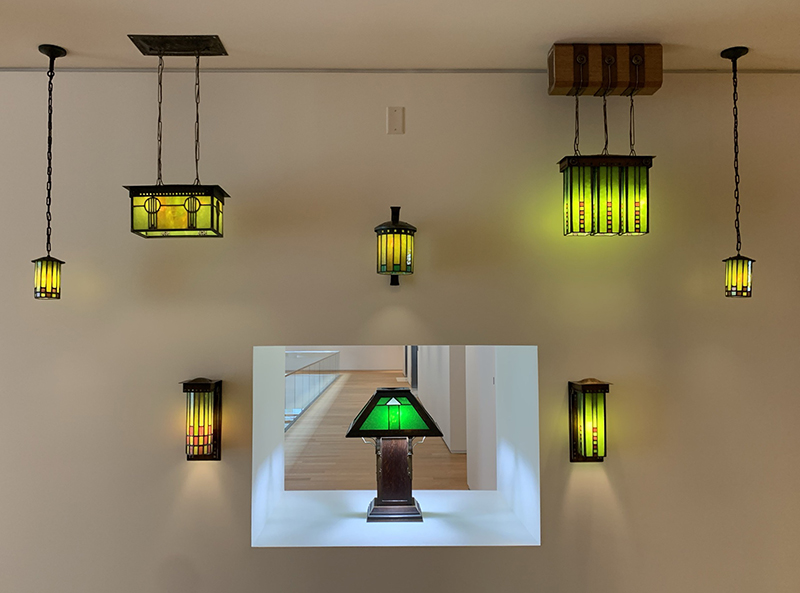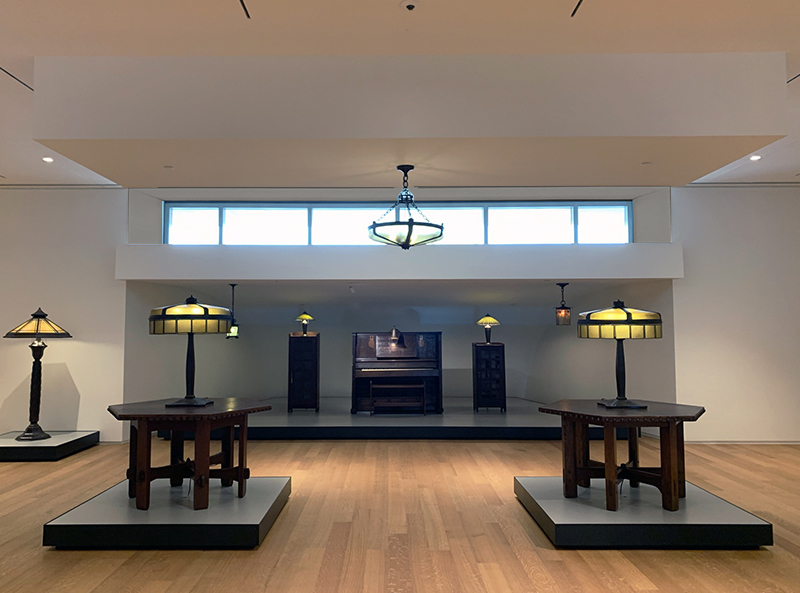

Dear Friends of MAACM,
The Museum team and I have nearly completed the installation of our galleries, exhibits, museum store, and café. The date of the opening to the general public has not been set, but, in advance of that date, I have created a periodic MAACM Newsletter to communicate directly with members, patrons, donors, and friends of the Museum. It will be emailed to our current subscribers, posted on our website (www.museumaacm.org), and anyone who visits our webpage will be able to sign up. The newsletter features progress reports, recent acquisitions, and previews of the Museum’s galleries and exhibits. Future newsletters will detail a pre-opening schedule of tours and events leading up to the Grand Opening, especially curated for members, patrons, elected officials, and community, art, and business leaders.
Among the many exhibits already completed, the lighting galleries on the third floor are of particular note. Arts and Crafts designers adopted the relatively new invention of electricity, creating beautiful and imaginative fixtures in diverse materials, including copper, brass, wood, ceramic, glass, mica, and shell. They developed forms that were pleasing to the eye, whether turned on or off. The works on display in these galleries are some of the most distinctive creations of the Arts and Crafts movement. I am particularly proud to give you a peek at the lighting galleries. I have also included in this issue an essay on the fantastic works of Dard Hunter.
Enjoy and thank you for your support,
Rudy Ciccarello



The community of artisans known as Roycroft was founded in 1895 in East Aurora, NY, by successful salesman and writer Elbert Hubbard. While it began as a printing press, the community quickly expanded to produce book bindings, furniture, leaded glass, pottery, and metalwork. In many ways, Roycroft became the ideal self-sustaining Arts and Crafts colony.

Dard Hunter (1883–1966) was one of the many successful craftsmen who got their start at Roycroft. Hunter’s designs in metalwork, leaded glass, furniture, and illustration garnered much attention during his tenure with the community from 1904–1910, and continued to influence Roycroft’s artisans long after he left. Initially hired by Hubbard as a book designer and illustrator, Hunter continually expanded his repertoire of skills. In 1904, he spent a month at the New York studio of J. & R. Lamb to learn the art of leaded glass. Upon his return to East Aurora, Hunter was put in charge of leaded glass production.
While Hunter’s early projects were inspired mostly by the English Arts and Crafts movement and California Mission style, he was exposed to contemporary European art and design through reference sources available in the Roycroft library. Hunter became interested in modern art from Vienna and Glasgow, and as a result his style became more geometric, often incorporating intense colors. A group of electric light fixtures produced in this aesthetic and attributed to Hunter—hanging lanterns, wall sconces, and a lamp—are on display at MAACM. Their shades are composed of leaded green and purple glass within grids of vertical and horizontal forms.

A large c. 1906 – 1907 table lamp (fig. 1), probably created by Hunter from base to shade, showcases his wide-ranging skills. Though constructed on a large scale, this table lamp demonstrates subtle contrasts in material, shape, color, and texture. From the geometric base of plainsawn oak, copper strapwork rises at each corner to support a green and white leaded glass shade, framed in oak strips. This lamp, and others like it, were used on dining tables in Emerson Hall, a dormitory building for Roycroft’s artisans.
Hunter’s three-light Electrolier of 1909-1910 (fig. 2) incorporates a unique suspension method, designed to hang from a beam above the Roycroft Inn’s main dining room. Three leaded-glass shades, composed of elegant green and lavender rectangles and squares, descend from a copper cap. Additional decorative touches include bands of Viennese-inspired square cut-outs and applied wire spirals.
The "Chapel" lantern (fig. 3), made around the same time, has a rectangular frame suspended by two chains. Its copper cap is decorated with similar bands of squares and applied German silver wirework terminating in spirals. The green glass shade features circular leaded shapes, echoing the spiral forms. Roycroft did not offer this design for sale, but rather hung them in the print shop’s sales room – in a building called the Chapel – to catch the eyes of potential customers.
Hunter’s designs had a powerful impact upon Roycroft that far outlasted his tenure there. Later Roycroft craftsmen continued to adapt his style for use in light fixtures, metalwork, and furniture. The sales copy in Roycroft catalogues stressed the modernity of his lighting fixtures. Indeed, even after more than a century, Hunter’s work still appears fresh and up-to-date.